Test Drive: The Phinoi Dripper
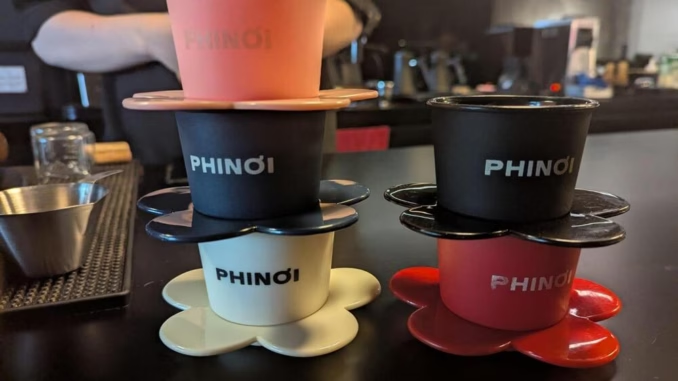
A modern interpretation of Vietnam’s traditional phin filter, the Phinoi made its debut last month at World of Coffee Jakarta. Today, we’re giving it a go.
BY VASILEIA FANARIOTI
SENIOR ONLINE CORRESPONDENT
Photos courtesy of Vasileia Fanarioti
Can a modern phin filter reinvent how we experience Vietnamese coffee? That’s the question posed by the Phinoi, a strikingly modern take on the country’s iconic brewing tool. Designed by Vu Dình Tú, founder of Vietnam coffee shop Refined. and one of the country’s most visible fine robusta advocates, the Phinoi is a reimagination of the original.
Created as a separate side project from Refined., the Phinoi debuted last month at World of Coffee in Jakarta, Indonesia, signaling that its ambitions stretch far beyond Vietnam. With a bright, youthful design and lightweight build, the Phinoi is meant for both classic phin lovers and a new generation of curious brewers—and I had the chance to take it for a spin.
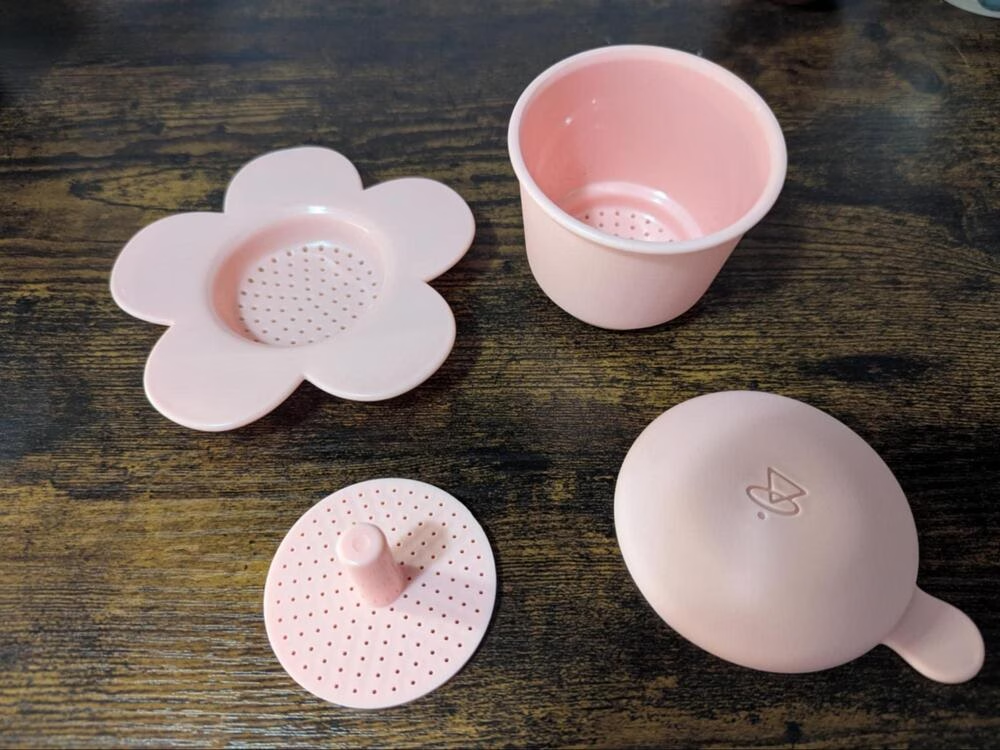

The Dripper’s Design: Traditional Feel, Contemporary Flair
At first glance, the Phinoi distinguishes itself from traditional phin brewers with a lightweight, contemporary design. Made from virgin polypropylene, a food-safe plastic resistant to temperatures up to 120°C (248°F), the brewer weighs just 80 grams. Its portability makes it well-suited for travel or outdoor brewing, without the risk of denting or breakage common to aluminum models.
One of the more technical features is the brewer’s 164.8-degree internal slope, which aids water flow and reduces the clogging issues often experienced with conventional phin designs. The base is broad and stable, and the chamber is shaped to fit comfortably in the hand. The unit is also dishwasher safe, making cleanup straightforward.
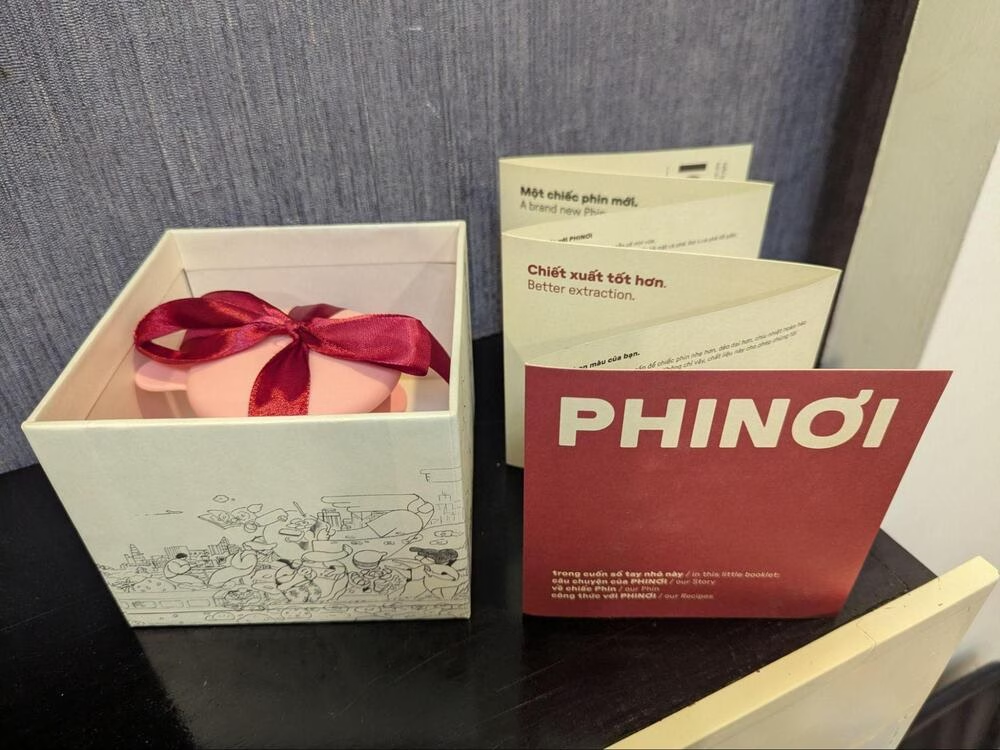

The overall shape is subtly inspired by a flower, a detail that reflects the designer’s intent to fuse function with a visual identity rooted in Vietnamese aesthetics. Available in five solid colors, the Phinoi departs from the utilitarian look of classic brewers, appealing to a younger generation seeking both familiarity and visual distinction.
While the plastic construction may not appeal to those who prefer the weight and patina of metal, it offers practical advantages in terms of durability, usability, and accessibility. As a reinterpretation of a traditional tool, the Phinoi invites a reconsideration of what Vietnamese coffee equipment can look—and feel—like.
Brewing Test: Two Styles, One Tool
Traditional Phin Brewing
For the first test, I brewed a robusta from Vietnam using the classic phin method: ground coffee, gravity press, hot water, and a little patience. Thanks to the improved flow angle, I got a consistently timed extraction with no blockage—something I can’t always say for traditional metal phins.
The resulting cup was bold and aromatic, with all the phin character you’d expect: low acidity, full body, and a chocolatey finish. The Phinoi manages to retain the essence of the old-school brew, but in a more consistent and user-friendly format.
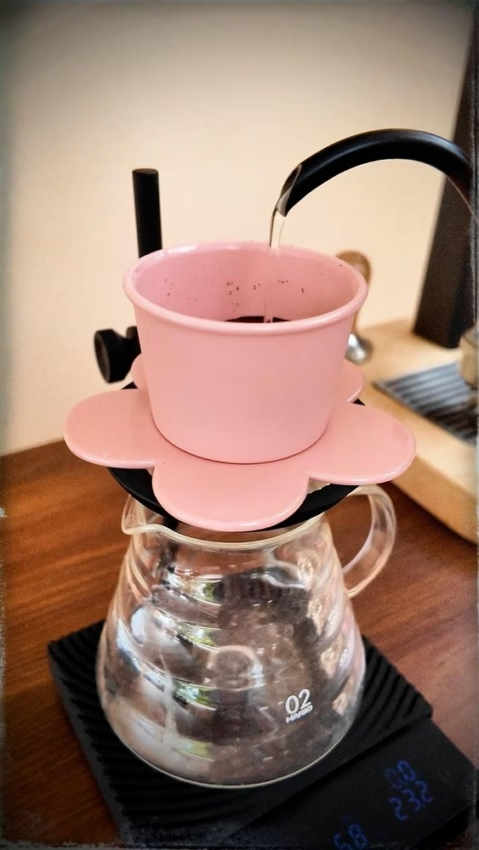


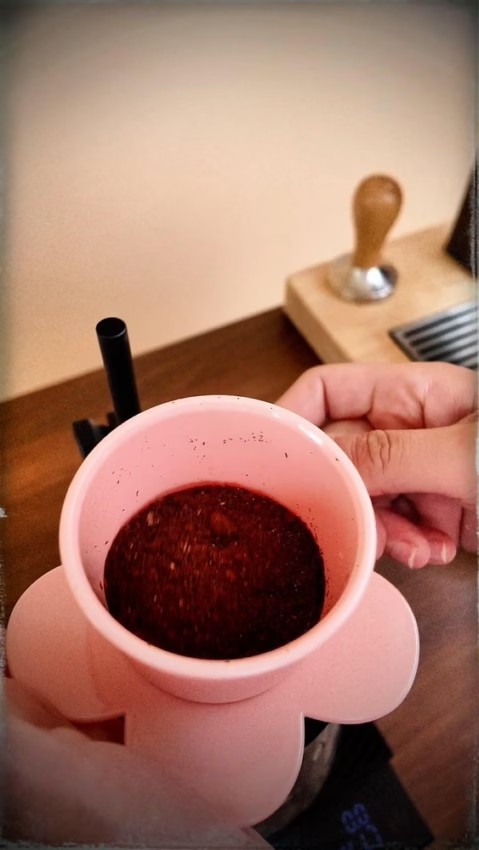


Pourover Style with a Paper Filter
Next, I used a small Kalita Wave 155 paper filter, placed inside the Phinoi chamber to test its pourover capabilities. The grind was slightly coarser, and the brew method felt more akin to a Hario V60—except with a more compact and grounded design.
Surprisingly, the Phinoi performed well here too. The paper filter allowed for a cleaner, brighter cup with better-defined fruit and floral notes. It won’t replace high-end drippers in a professional cupping lab, but for home brewers and travelers? It’s a brilliant hybrid option.
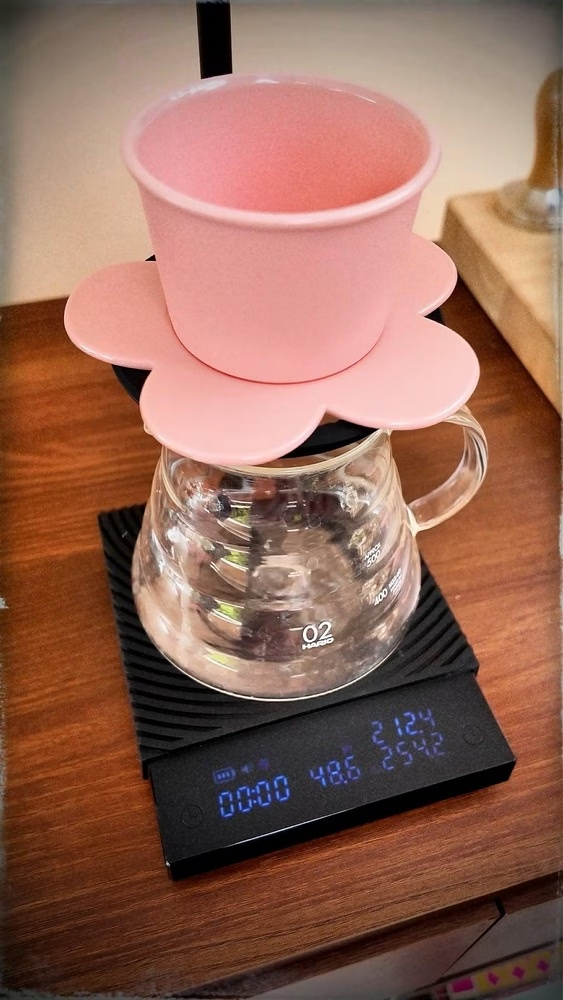


The Phinoi in Context
The Phinoi appeals to a range of users. For many in Vietnam, it offers a more consistent and travel-friendly way to brew a style of coffee that’s deeply rooted in daily life. Its portability and durability also make it a practical option for those who brew on the go. And for newcomers to coffee, the Phinoi provides an accessible introduction to both traditional phin brewing and pourover techniques—without requiring multiple tools.
But beyond convenience, the Phinoi reflects a broader effort to reinterpret tradition through design. It responds to a generational shift: While the phin remains a symbol of Vietnamese coffee culture, younger coffee drinkers are increasingly engaging with newer methods and aesthetics. The Phinoi attempts to meet that shift—not by replacing the old, but by adapting it.
For a product that began as a side project in Hanoi, its evolution signals something larger: the quiet, ongoing reinvention of Vietnamese coffee culture from within. To learn more, visit the Phinoi website here.
ABOUT THE AUTHOR
Vasileia Fanarioti (she/her) is a senior online correspondent for Barista Magazine and a freelance copywriter and editor with a primary focus on the coffee niche. She has also been a volunteer copywriter for the I’M NOT A BARISTA NPO, providing content to help educate people about baristas and their work.
Subscribe and More!
As always, you can read Barista Magazine in paper by subscribing or ordering an issue.
Read the June + July 2025 Issue for free with our digital edition.
For free access to more than five years’ worth of issues, visit our digital edition archives here.
Source: Barista Magazine



